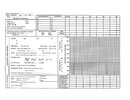That is absolutely the case, Sevoflurane alone would sleep the patient - with MAC intubation (if normal no jaw issue) would at least open any mouth except closing mouth like her; here I decided to give Propofol and it is in literature (I believe) have some relaxation effect - (correct me if I am wrong). I believe you could imagine the situation, and I am not defending Propofol magic effect, but it is truly worked for me and let her mouth opened and I could go with ease to see her larynx and the vocal cords and they were partially opened, and I could do intubation, but now I am realizing every time I am writing or aka explaining and finding my mistakes, like if I intubated her before muscle relaxation, that would make her (if she didn't sleep properly) cough on the tube and would increase her intra-abdominal pressure jeopardizing aspiration - right? But I gave the muscle relaxants and her tongue rolled back and then (Thanks I gave her good preoxygenation) I tried to manipulate the tongue by my fingers and then mac blade - imagine if I didn't act fast, it could've faced an obstructed airway (honestly, I didn't ventilated her by mask in this part - my aim is to relieve the obstruction "if any" of this tongue) !
But the question, why with propofol - the tongue was normally located and the mouth was opened with ease? and then Why with muscle relaxants the tongue rolled to the back like shrunk down!
This is good plan, awake Fiberoptic first (by the way - an NG tube was in, I think doesn't matter right? you can use the other nostril) - then you said next if didn't work, a Ketamine + inhalational (I did Propofol - so my question - do you have problems with propofol induction?) and as of Ketamine - we are concerned of ICP (but digging literatures and articles said in low analgesic doses with all other induction agents, there is no significant increase in the ICP ...) and again "we" still fear using it, and I would love to overcome this fear and use it the Ketamine, as well as the brave muscle relaxants the sux (succinylcholine) !
Back to your last two lines - are you against intubating a patient who is spontaneously breathing on propofol / inhalation (fearing a spike in sympathetic responses or ICP) - so how about what basic knowledge we studied in the first year of what is called Mac intubation (isn't able to abolish the sympathetic response to intubation - prior to it Mac Bar 1.5 ?)
What do you think?

